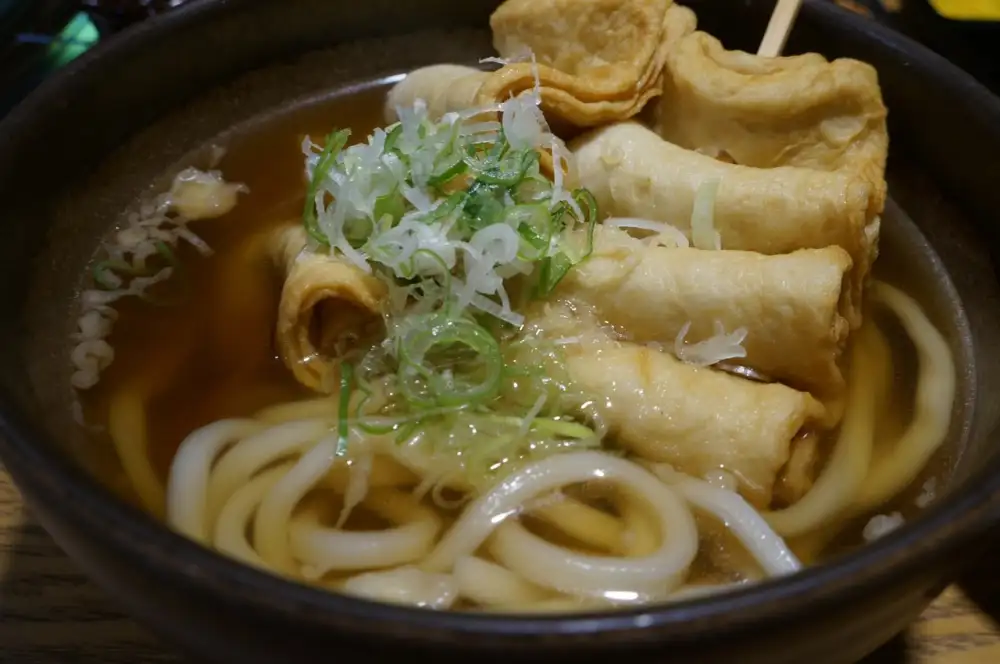Flavorful Fish Cakes: A Delectable Recipe to Satisfy Your Cravings

- History and Origins of Fish Cakes
- Ingredients Required for Making Fish Cakes
- Step-by-Step Instructions for Making Fish Cakes
- Variations and Flavor Combinations for Fish Cakes
- Serving Suggestions and Accompaniments for Fish Cakes
- Health Benefits of Fish Cakes
- Tips and Tricks for Perfectly Cooked Fish Cakes
- Frequently Asked Questions about Fish Cakes
Fish cakes are a delectable dish that has been enjoyed by people around the world for centuries. These flavorful cakes are made with a combination of fish, herbs, spices, and other ingredients, resulting in a delicious and satisfying meal. Whether you're a seafood lover or simply looking to try something new, fish cakes are sure to satisfy your cravings. In this article, we will explore the history and origins of fish cakes, the ingredients required for making them, step-by-step instructions for preparation, variations and flavor combinations to experiment with, serving suggestions and accompaniments, health benefits, tips and tricks for perfectly cooked fish cakes, frequently asked questions about this dish, and conclude with our final thoughts on why fish cakes are a must-try culinary delight. So let's dive in and discover the wonderful world of fish cakes!
History and Origins of Fish Cakes
Fish cakes have a rich history that can be traced back to various cultures around the world. The origins of fish cakes can be found in countries such as China, Japan, Thailand, and England.
In China, fish cakes are believed to have originated during the Tang Dynasty (618-907 AD). They were initially made using freshwater fish and were considered a delicacy enjoyed by the wealthy. Over time, fish cakes became more accessible and popular among all social classes.
In Japan, fish cakes are known as "kamaboko" and have been a staple in Japanese cuisine for centuries. The technique of making kamaboko was introduced from China during the 9th century. Today, kamaboko is commonly used in soups, noodle dishes, and as a topping for sushi.
Thailand also has its own version of fish cakes called "tod man pla." These flavorful patties are made with minced fish mixed with herbs and spices such as red curry paste and kaffir lime leaves. Tod man pla is often served as an appetizer or street food snack in Thailand.
In England, fish cakes have been enjoyed since the 19th century. They were originally made using leftover cooked fish mixed with mashed potatoes and seasonings before being coated in breadcrumbs and fried. Fish cakes became popular during World War II when food rationing was in place.
The history of fish cakes showcases their versatility and adaptability across different cultures. Whether it's steamed or fried, spicy or mild, these delectable treats continue to satisfy cravings worldwide.
Ingredients Required for Making Fish Cakes
To make delicious fish cakes, you will need a few key ingredients. The star of the show is, of course, fresh fish. Opt for firm white fish such as cod, haddock, or tilapia. You'll also need some potatoes to bind the mixture together and add a creamy texture. Other essential ingredients include breadcrumbs or flour for coating, eggs to help with binding, and seasonings like salt, pepper, and herbs for flavor. Additionally, you can add onions, garlic, lemon zest, or chili flakes to enhance the taste. These simple yet flavorful ingredients come together to create the perfect base for your fish cakes.
Step-by-Step Instructions for Making Fish Cakes
1. Start by selecting fresh fish fillets such as cod, salmon, or haddock. Remove any skin and bones, then chop the fish into small pieces.
2. In a mixing bowl, combine the chopped fish with mashed potatoes, finely chopped onions, minced garlic, and fresh herbs like parsley or dill.
3. Add a squeeze of lemon juice for a burst of freshness and season with salt and pepper to taste.
4. Mix all the ingredients together until well combined. The mixture should hold its shape when formed into patties.
5. Shape the mixture into round or oval-shaped patties using your hands or a mold. Flatten them slightly to ensure even cooking.
6. Heat oil in a frying pan over medium heat. Gently place the fish cakes in the pan and cook for about 3-4 minutes on each side until golden brown and crispy.
7. Once cooked, transfer the fish cakes to a paper towel-lined plate to remove any excess oil.
8. Serve hot with a side of tartar sauce or aioli for dipping, along with lemon wedges for an extra zing of flavor.
9. Enjoy these delicious fish cakes as an appetizer, main course, or even as part of a sandwich or burger.
10. Remember to handle the fish cakes gently while cooking to prevent them from falling apart and ensure they are cooked through before serving.
Follow these simple steps to create flavorful fish cakes that are sure to satisfy your cravings!
Variations and Flavor Combinations for Fish Cakes
Fish cakes are a versatile dish that can be customized with various flavors and ingredients. Here are some popular variations and flavor combinations to enhance your fish cakes:
1. Classic Herbs and Spices: Add a burst of flavor by incorporating fresh herbs like parsley, dill, or cilantro into your fish cake mixture. You can also experiment with spices such as paprika, cayenne pepper, or Old Bay seasoning for a kick.
2. Asian-inspired Twist: Infuse your fish cakes with Asian flavors by adding ingredients like ginger, garlic, soy sauce, and sesame oil. Consider including chopped scallions or water chestnuts for added texture.
3. Mediterranean Delight: Give your fish cakes a Mediterranean flair by using ingredients like sun-dried tomatoes, Kalamata olives, feta cheese, and oregano. These additions will bring a tangy and savory taste to your dish.
4. Smoky Sensation: For a smoky flavor profile, consider incorporating smoked fish into your fish cake mixture. Smoked salmon or trout can add depth and richness to the overall taste.
5. Spicy Heat: If you enjoy some heat in your food, consider adding diced jalapenos or red pepper flakes to the fish cake mixture. This will give your dish a spicy kick that pairs well with creamy sauces or cooling dips.
6. Seafood Medley: Expand the flavors by combining different types of seafood in your fish cakes. Shrimp, crabmeat, or lobster can be mixed with the fish to create a delightful seafood fusion.
Remember to adjust the seasoning accordingly when experimenting with different flavor combinations. The key is to balance the flavors while still allowing the natural taste of the fish to shine through. Get creative in the kitchen and discover your own unique twist on this classic recipe!
Serving Suggestions and Accompaniments for Fish Cakes
Fish cakes are a versatile dish that can be enjoyed in various ways. Here are some serving suggestions and accompaniments to enhance the flavors of your fish cakes:
1. Tartar Sauce: A classic accompaniment, tartar sauce adds a tangy and creamy element to fish cakes. The combination of mayonnaise, pickles, capers, and lemon juice complements the savory flavors of the fish.
2. Lemon Wedges: Squeezing fresh lemon juice over fish cakes adds a refreshing citrusy kick and helps cut through any richness. It also enhances the natural flavors of the fish.
3. Salad: Serve fish cakes on a bed of fresh greens or alongside a simple salad dressed with vinaigrette. The crispness and acidity of the salad provide a nice contrast to the soft texture of the fish cakes.
4. Coleslaw: Creamy coleslaw pairs well with fish cakes, adding crunch and sweetness to each bite. The combination creates a satisfying balance of textures and flavors.
5. Dipping Sauces: Experiment with different dipping sauces like spicy aioli, sweet chili sauce, or soy-based sauces for an extra burst of flavor.
6. Sandwiches/Burgers: Transform your fish cakes into delicious sandwiches or burgers by placing them between two slices of bread or buns. Add lettuce, tomatoes, and your favorite condiments for a satisfying meal.
7. Rice or Quinoa: Serve fish cakes alongside steamed rice or quinoa for a wholesome and filling meal. The grains complement the protein-rich fish cakes while providing additional texture.
Remember to consider your personal preferences when choosing accompaniments for your fish cakes. Whether you prefer traditional options or want to experiment with new flavors, there are endless possibilities to create a delightful dining experience with this delectable dish!
Health Benefits of Fish Cakes
Fish cakes not only satisfy your taste buds, but they also provide numerous health benefits. Firstly, fish is a rich source of high-quality protein, which is essential for building and repairing tissues in our body. Additionally, fish is packed with omega-3 fatty acids that promote heart health by reducing the risk of cardiovascular diseases. These fatty acids also support brain function and can help improve cognitive abilities. Fish cakes are low in saturated fat and calories compared to other fried dishes, making them a healthier option. Moreover, fish is a good source of vitamins such as vitamin D and B12, as well as minerals like iodine and selenium. These nutrients contribute to bone health, immune function, and thyroid regulation. By incorporating fish cakes into your diet, you can enjoy their delicious taste while reaping the many health benefits they offer.
Tips and Tricks for Perfectly Cooked Fish Cakes
1. Use fresh fish: Opt for fresh, high-quality fish to ensure the best flavor and texture in your fish cakes. Avoid using frozen or previously cooked fish as it may affect the taste.
2. Properly drain the fish: After cooking or thawing frozen fish, make sure to drain any excess moisture thoroughly. Excess moisture can make the mixture too wet, resulting in soggy fish cakes.
3. Use a binder: Adding a binder such as breadcrumbs, eggs, or mashed potatoes helps hold the ingredients together and prevents the fish cakes from falling apart during cooking.
4. Chill before shaping: Before shaping the mixture into patties, refrigerate it for at least 30 minutes. Chilling allows the flavors to meld together and makes it easier to shape the patties without them breaking apart.
5. Coat with breadcrumbs: To achieve a crispy exterior, coat each patty with breadcrumbs before frying or baking. This adds an extra layer of texture and enhances the overall taste.
6. Cook over medium heat: When cooking fish cakes, use medium heat to ensure they cook evenly without burning on the outside while remaining raw inside.
7. Avoid overcrowding the pan: Give each fish cake enough space in the pan to cook properly. Overcrowding can lead to uneven cooking and prevent them from getting crispy.
8. Flip gently: When flipping the fish cakes, do so gently using a spatula or tongs to avoid breaking them apart. Allow each side to cook until golden brown before flipping.
9. Drain excess oil: After frying, place cooked fish cakes on a paper towel-lined plate to absorb any excess oil and keep them from becoming greasy.
10. Rest before serving: Allow the cooked fish cakes to rest for a few minutes before serving. This allows them to set and retain their shape better when plated.
By following these tips and tricks, you can achieve perfectly cooked fish cakes with a delightful texture and delicious flavor.
Frequently Asked Questions about Fish Cakes
1. Can I use any type of fish for making fish cakes?
Yes, you can use a variety of fish such as cod, salmon, tuna, or even shrimp to make fish cakes. Choose a fish that has a firm texture and mild flavor for best results.
2. Can I substitute breadcrumbs with something else?
If you're looking for a gluten-free option, you can replace breadcrumbs with crushed cornflakes or gluten-free crackers. You can also use mashed potatoes or cooked quinoa as binders.
3. Can I freeze fish cakes?
Yes, you can freeze uncooked fish cakes for up to 3 months. Place them on a baking sheet lined with parchment paper and freeze until firm. Then transfer them to an airtight container or freezer bag.
4. How do I prevent my fish cakes from falling apart?
To prevent your fish cakes from falling apart, make sure to finely chop the ingredients and use enough binding agents like eggs and breadcrumbs. Also, refrigerate the mixture for at least 30 minutes before shaping and cooking.
5. Can I bake instead of frying the fish cakes?
Yes, you can bake the fish cakes in a preheated oven at 400°F (200°C) for about 20-25 minutes or until golden brown and cooked through. Flip them halfway through baking for even browning.
6. Are fish cakes suitable for people with seafood allergies?
Fish cakes are not suitable for individuals with seafood allergies as they contain fish as the main ingredient. However, you may consider using alternative proteins like chicken or tofu to make similar patties.
Remember to always check the specific dietary needs and restrictions of individuals before serving any dish containing allergens.
In conclusion, fish cakes are a versatile and delicious dish that can satisfy your cravings for seafood. With their rich history and origins, they have become a popular choice in many cuisines around the world. By using fresh ingredients and following the step-by-step instructions, you can easily create flavorful fish cakes at home.
The variations and flavor combinations for fish cakes are endless, allowing you to customize the recipe to your liking. Whether you prefer a classic combination of herbs and spices or want to experiment with different types of fish, there is something for everyone.
When serving fish cakes, consider pairing them with a tangy tartar sauce or a zesty lemon aioli. These accompaniments enhance the flavors of the fish cakes and add an extra layer of indulgence.
Not only do fish cakes taste amazing, but they also offer numerous health benefits. Fish is an excellent source of lean protein and omega-3 fatty acids, which are essential for heart health and brain function. By incorporating fish cakes into your diet, you can enjoy a nutritious meal without sacrificing taste.
To ensure perfectly cooked fish cakes every time, remember to use high-quality ingredients and follow the cooking instructions carefully. Avoid overcooking the fish cakes as this can result in dryness. Instead, aim for a golden brown crust on the outside while keeping the inside moist and tender.
Lastly, here are some frequently asked questions about fish cakes:
1. Can I use frozen fish for making fish cakes?
Yes, you can use frozen fish as long as it is thawed properly before using it in the recipe.
2. Can I make fish cakes ahead of time?
Yes, you can prepare the mixture ahead of time and refrigerate it until ready to cook. This makes them perfect for entertaining or meal prepping.
In conclusion, whether enjoyed as an appetizer or main course, fish cakes are a delightful dish that pleases both seafood lovers and those looking to incorporate more fish into their diet. So go ahead, give this recipe a try and let the flavors of the sea transport you to culinary bliss.
Published: 28. 02. 2024
Category: Recipes



